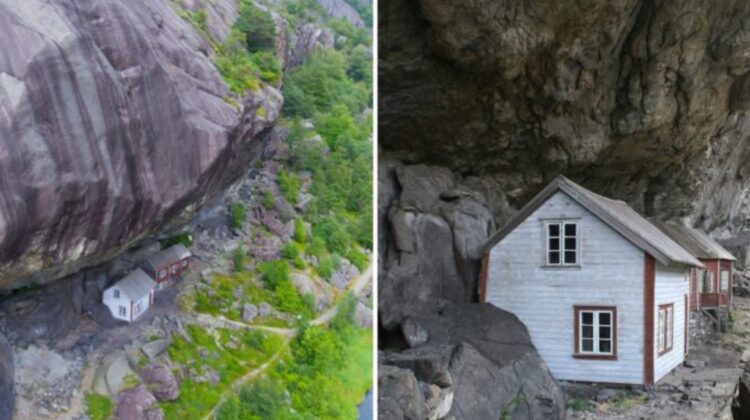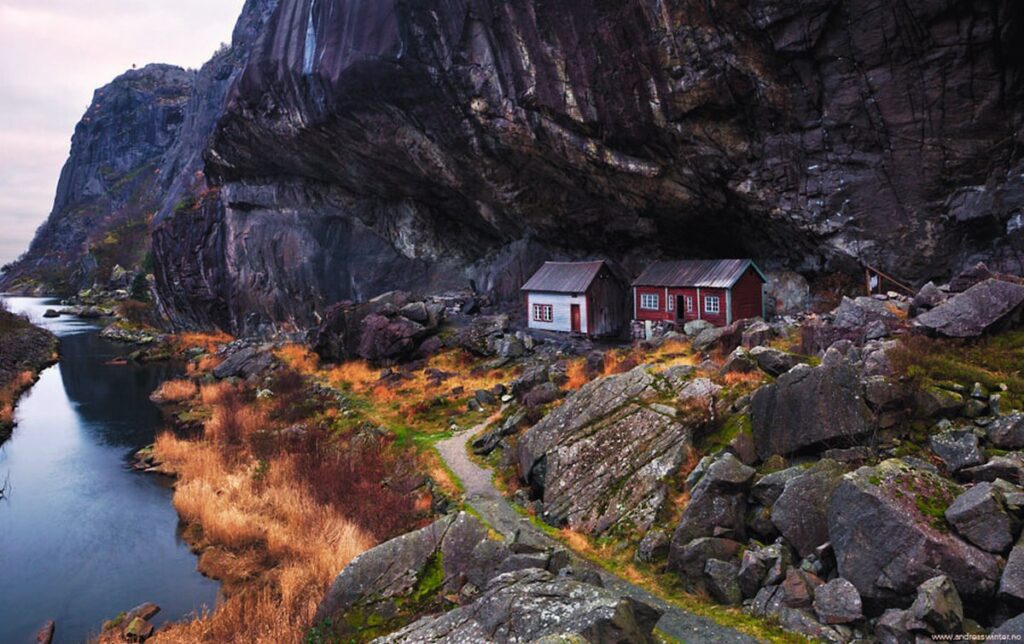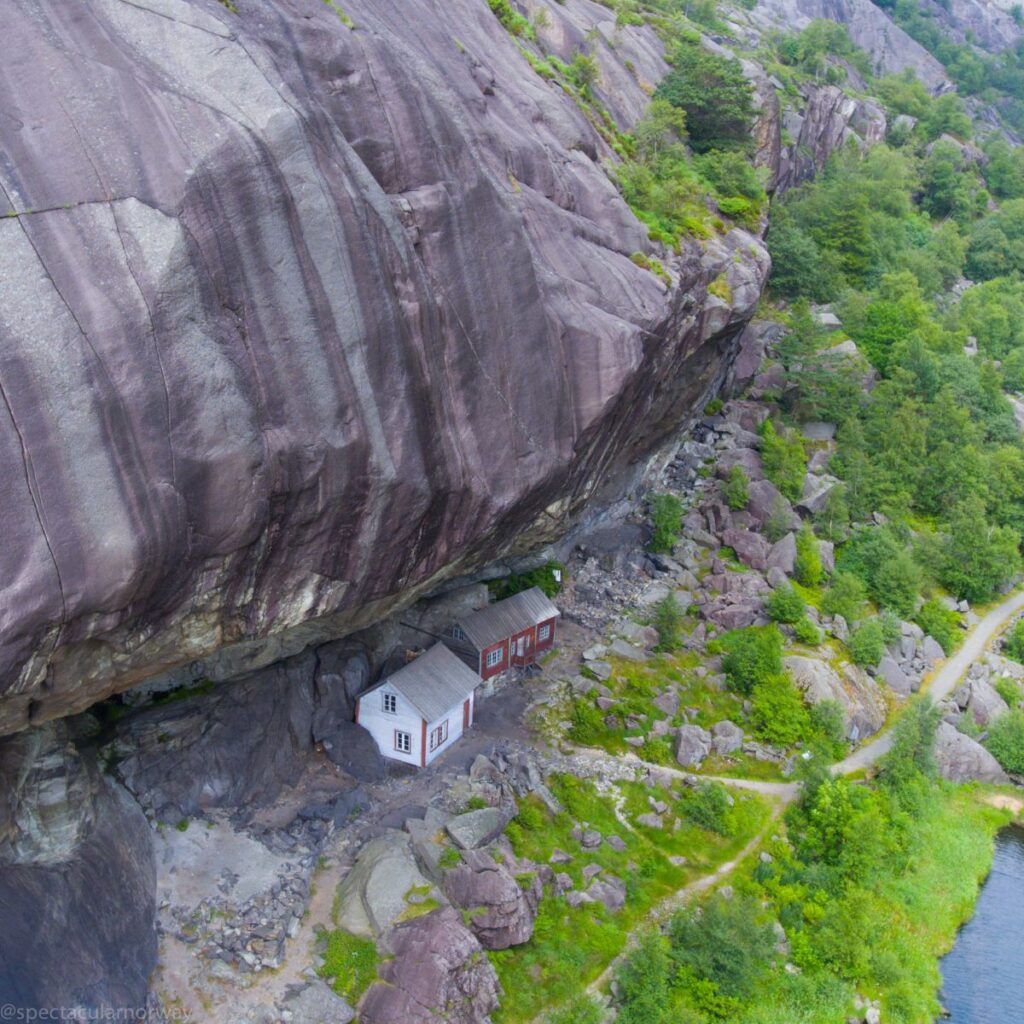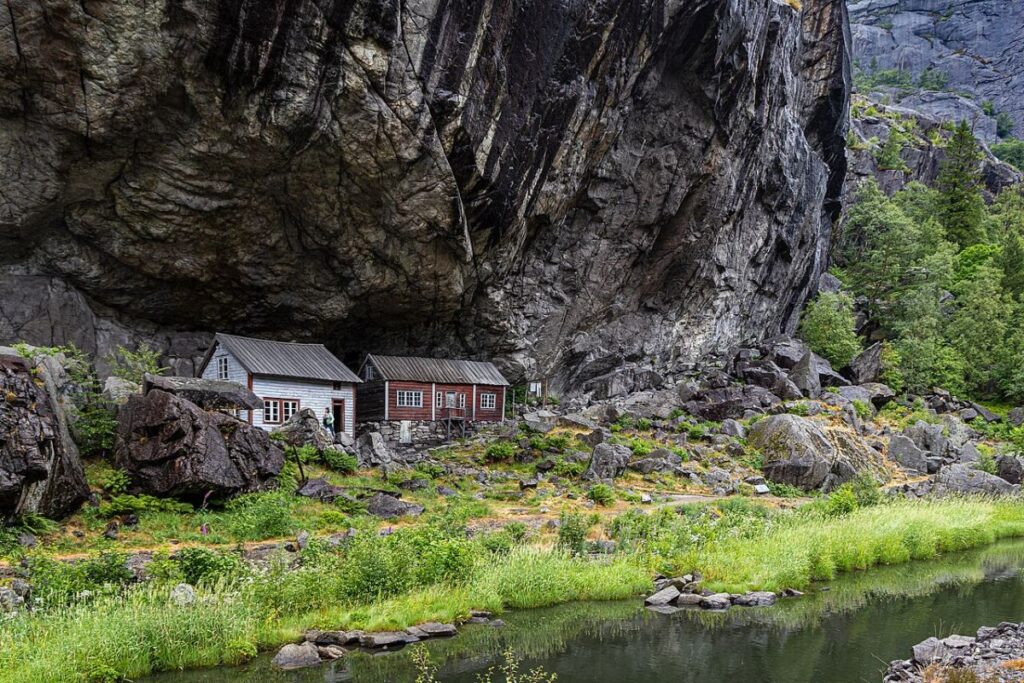
Tucked beneath the grandeur of an immense rock overhang in the idyllic Jøssingfjord of Norway, Helleren farm stands as a testament to human resourcefulness and an enduring connection between people and nature.
For those seeking a unique and captivating cultural heritage site in Norway, Helleren farm in Jøssingfjord is a must-visit. Here, two traditional houses from the 1800s are nestled under a colossal rock shelter, preserved for centuries by the natural protection the rock provides, forming a protective roof over them.

Situated in Sokndal municipality along the North Sea Route between Egersund and Flekkefjord, Helleren farm’s houses, adorned in white and red hues, stand out against the rocky backdrop and the fjord’s muted tones. The rock shelter, known as Helleren or Hedlaren, stretches 60 meters in length and 10 meters in depth, serving as a haven for humans for thousands of years. Traces of Stone Age activity under Helleren indicate its use as a temporary shelter by hunters and fishermen.
The two houses, visible today, were constructed in the 1800s, possibly incorporating older sections dating back to the 1500s. Exemplifying Norwegian rural architecture, the wooden-walled houses lack conventional roofs, benefiting from the rock shelter’s shielding against rain, snow, and wind, ensuring their endurance.

Inhabited until the 1920s, the houses were eventually abandoned due to a lack of modern amenities. The last residents, two sisters, lived without electricity or running water. Today, Dalane Folkemuseum owns and manages Helleren farm, overseeing its preservation. The houses are open to the public, offering a glimpse into historical living conditions.
Visitors can explore the interiors, gaining insights into past lifestyles, and admire the breathtaking scenery of Jøssingfjord, surrounded by steep mountain walls and concluding in a vast stone scree. The fjord also holds historical significance, being the site of the Altmark affair in 1940, a pivotal event during World War II when British forces liberated prisoners from a German tanker, providing Germany with a pretext to invade Norway.


Accessing Helleren farm involves parking on the opposite side of the river and a brief five-minute walk to the houses. During the summer season, amenities like toilets and a kiosk with refreshments are available nearby. Visitors are urged to exercise caution and respect the site’s fragility, recognizing it as a valuable cultural heritage belonging to all.
Helleren farm in Norway stands not just as a physical relic but as a narrative of adaptation to the environment, showcasing how people leveraged natural resources to construct their homes. It weaves a tale of history and identity preservation, emphasizing the responsibility to safeguard this legacy for future generations.

Leave a Reply